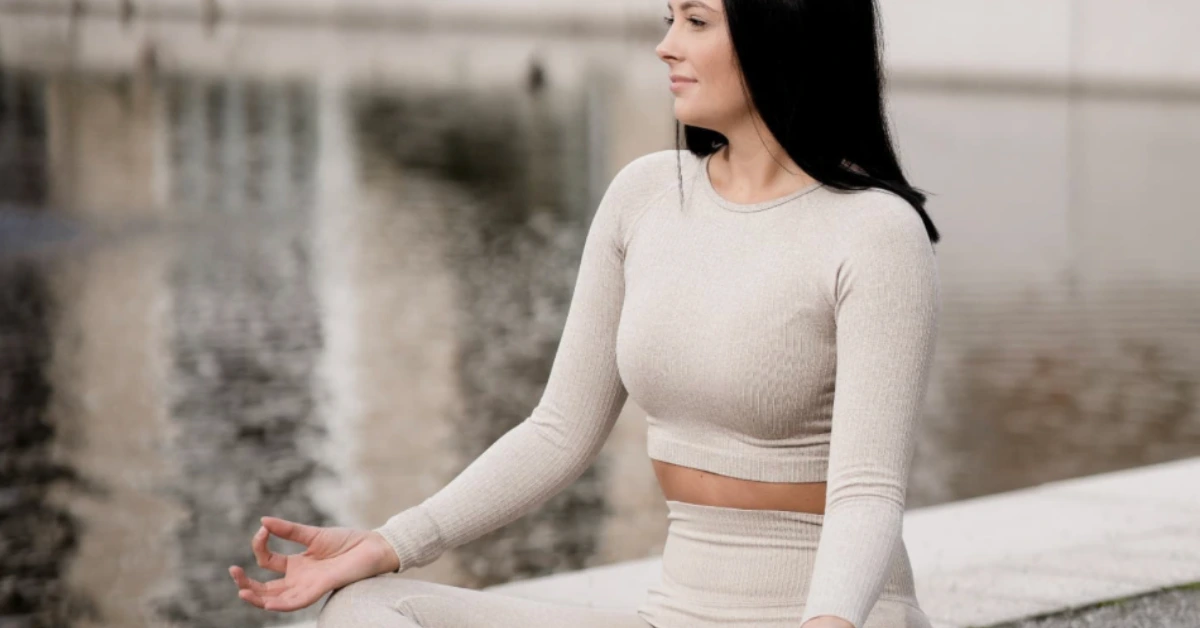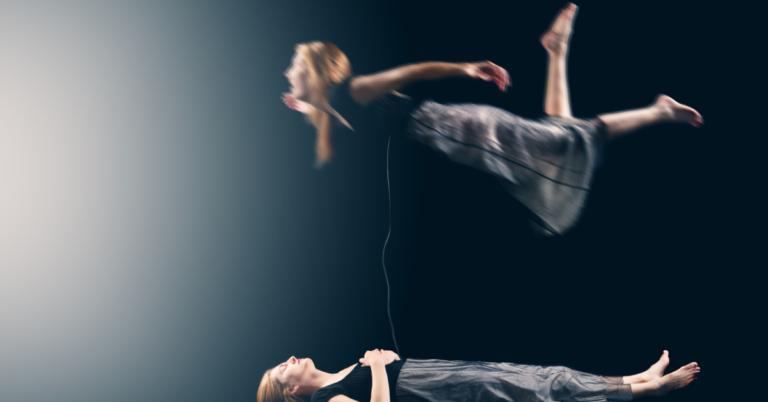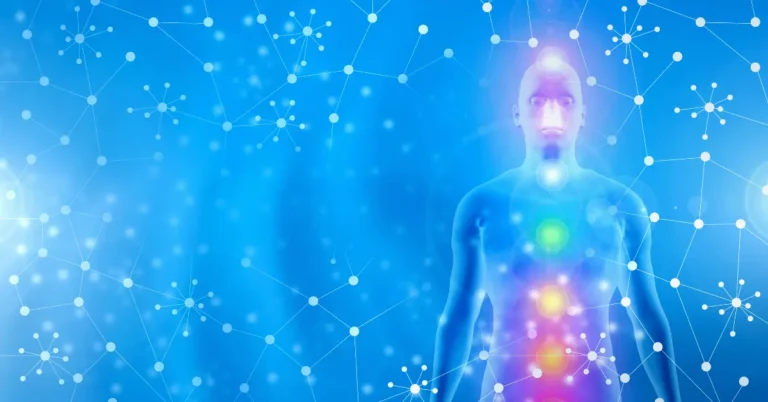Prepare to embark on a journey of profound self-awareness and relaxation as we delve into the world of “Body Scan Guided Meditation Script.” In the hustle and bustle of our fast-paced lives, we often overlook the importance of tuning in to our bodies, understanding the whispers of tension and release they communicate.
This article is your guide to the art of body scan guided meditation script. Imagine it as a powerful flashlight, guiding you through the intricate landscapes of your body, releasing stress and promoting deep relaxation.
I personally prefer to lead body scans in Shavasana and my clients love it – after this article you will love it, too.
I love this Yoga mat 🧘🏼♀️
✅ Anti-Slip Surface ✅ Effortless Cleaning
✅ Conscious & Safe Materials
What is Body Scan Guided Meditation Script?
Body scan guided meditation script is a mindfulness practice that involves focusing on the physical sensations throughout the body. It is a guided meditation that is designed to bring awareness to the present moment, cultivate present-moment awareness, and increase awareness of the body.
The goal of a body scan guided meditation script is to bring attention to each part of the body, one at a time, and to observe the physical sensations that arise. This practice can help individuals become more aware of their body, reduce stress and anxiety, and improve overall well-being.
During the practice, the individual is guided to lie down or sit in a comfortable position and bring their attention to their breath. The individual then focuses on each part of the body, starting from the toes and working their way up to the head, observing any physical sensations that arise without judgment.
Body scan guided meditation script can be done in various lengths, ranging from a few minutes to over an hour. It is recommended to start with shorter sessions and gradually increase the length as the individual becomes more comfortable with the practice. I personally teach body scans with a duration of 20 minutes.
Preparation for Body Scan Guided Meditation Script

Before starting a body scan meditation, it is important to prepare a quiet and comfortable environment. This will help the practitioner to focus their attention on their body without any external distractions.
Choosing a Quiet Place
The first step in preparing for a body scan meditation is to choose a quiet place where there are no distractions. This can be a separate room or a quiet corner in a home or office. The place should be free from any external noise such as traffic, people talking, or any other noise that can distract the practitioner.
Comfortable Seating or Lying Position
The next step is to choose a comfortable seating or lying position. The practitioner should choose a position that they can maintain for the duration of the meditation. For example, if the practitioner chooses to sit, they should find a comfortable chair or cushion to sit on. If they choose to lie down, they should find a comfortable surface such as a yoga mat or a bed.
It is important to note that the practitioner should not fall asleep during the meditation. Therefore, it is recommended to choose a position that is comfortable but not too comfortable that it puts them to sleep.
Stages of Body Scan Guided Meditation Script

Body scan guided meditation script is a mindfulness practice that involves systematically scanning the body for sensations and observing them without judgment. It typically involves lying down or sitting in a comfortable position and following a guided meditation script. The practice is divided into three main stages: Breathing Awareness, Scanning the Body, and Observing Sensations.
Breathing Awareness
The first stage of body scan meditation involves focusing on the breath. The practitioner is instructed to bring their attention to the sensation of the breath entering and leaving the body. This stage helps to calm the mind and prepare the practitioner for the rest of the practice.
Scanning the Body
The second stage of body scan meditation involves systematically scanning the body for sensations. The practitioner is instructed to bring their attention to different parts of the body, starting from the toes and moving up to the head. They are encouraged to observe any sensations they feel in each part of the body, such as tension, warmth, or tingling. This stage helps to increase body awareness and promote relaxation.
Observing Sensations
The third stage of body scan meditation involves observing sensations without judgment. The practitioner is instructed to simply notice any sensations they feel without trying to change them or label them as good or bad. This stage helps to cultivate a non-judgmental attitude and increase mindfulness.
Body scan meditation is a powerful mindfulness practice that can help to reduce stress, increase body awareness, and promote relaxation. By following the stages of breathing awareness, scanning the body, and observing sensations, practitioners can develop greater mindfulness and cultivate a more positive relationship with their bodies.
Complete Body Scan Meditation

Breathing Awareness:
“Let’s begin by focusing on your breath. Inhale deeply through your nose, allowing your lungs to fill with air, and then exhale slowly through your mouth, releasing any tension. Breathe naturally, and let each breath anchor you in the present.”
Starting from Your Toes:
“Direct your attention to your toes. Notice any sensations in your toes. Are they warm or cool? Are they tense or relaxed? Gently scan your awareness through each toe, one by one, releasing any tension you may find.”
Moving Up to Your Feet:
“Now, move your attention to the soles of your feet. Feel the sensation of your feet against the surface beneath you. Allow any discomfort or tension to melt away as you focus on your feet.”
The Lower Legs:
“Shift your awareness to your lower legs. Scan your attention slowly from your ankles to your knees. Notice any points of tension, and as you exhale, allow them to release and relax.”
The Upper Legs:
“Continue to your upper legs, from your knees to your hips. Feel the weight of your legs, and with each breath, let go of any tightness or discomfort. Let your legs become heavy and relaxed.”
The Pelvis and Hips:
“Direct your focus to your pelvic area and hips. Pay attention to any sensations in this area. Breathe into any areas of tension, allowing them to soften and release.”
The Abdomen:
“Move your attention to your abdomen. Feel the rise and fall of your breath in this area. Let go of any holding or tightness as you breathe, allowing your abdomen to expand and contract naturally.”
The Chest:
“Shift your awareness to your chest. Feel the gentle rise and fall of your chest with each breath. Allow any tension or constriction to ease as you breathe deeply and slowly.”
The Back:
“Scan your attention to your back, from your lower back to your upper back. Feel the support of the surface beneath you. Release any tension you may find in your back muscles.”
The Shoulders:
“Focus on your shoulders. Are they hunched or tense? Breathe into this area, allowing your shoulders to drop and relax. Let go of any stress or burdens you may be carrying.”
The Arms:
“Shift your awareness to your arms, from your upper arms to your fingertips. Feel any sensations in your arms. Let go of any tension, allowing your arms to become light and free.”
The Neck:
“Bring your attention to your neck. Release any tightness or strain. Imagine a warm, soothing light flowing through your neck, bringing relaxation and comfort.”
The Head:
“Finally, focus on your head. Scan your awareness through your face, forehead, and the top of your head. Let go of any furrowed brows or clenched jaw. Allow your face to be soft and relaxed.”
Bringing it Together:
“As we conclude our Body Scan Meditation, take a moment to appreciate the sense of relaxation and connection to your body. You’ve cultivated a deep sense of mindfulness and presence.”
Closing:
“When you’re ready, gently start to bring your awareness back to your breath. Take a few deep breaths, and with each exhale, become more awake and alert. When you’re ready, open your eyes, carrying this sense of tranquility with you into your day.”
FAQ
What is a body scan guided meditation script, and how does it work?
A body scan guided meditation script is a mindfulness practice that involves systematically directing one’s attention to different parts of the body. It typically starts from the toes and moves up to the head. The goal is to increase awareness of physical sensations, promote relaxation, and release tension by consciously scanning and letting go of bodily stress and discomfort.
Is body scan guided meditation script suitable for beginners, or does it require prior meditation experience?
Body scan guided meditation script is suitable for individuals of all experience levels, including beginners. It is a straightforward and accessible practice that can be led by an instructor or through a script. Even if you’re new to meditation, you can easily follow the guidance to cultivate body awareness and relaxation.
What are the primary benefits of practicing a body scan guided meditation script, and how does it enhance well-being?
The practice of body scan guided meditation script can lead to several benefits, including reduced muscle tension, improved stress management, enhanced self-awareness, and a sense of relaxation and calm. It can also help individuals develop a deeper connection between their mind and body, fostering a greater understanding of how stress and emotions manifest physically.
How long should a typical body scan guided meditation script session last, and how can individuals adapt it to their needs?
The duration of a body scan meditation can vary based on personal preferences and available time. Sessions may range from 10 minutes to 30 minutes or longer. The key is to find a comfortable duration that aligns with your needs and allows you to thoroughly scan and release tension in your body. The practice can be adapted to suit your schedule and preferences.
If you liked this blog article about body scan guided meditation script, don’t forget to follow us on Pinterest so you don’t miss any more meditation news!






